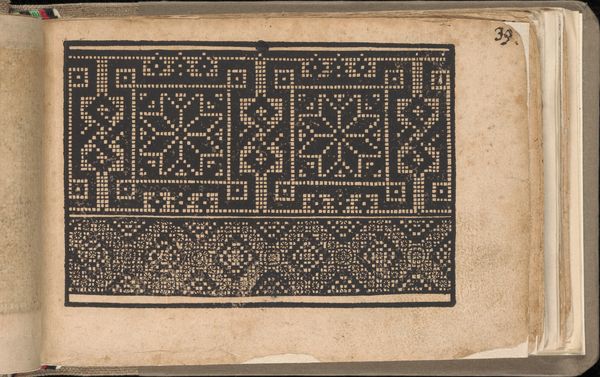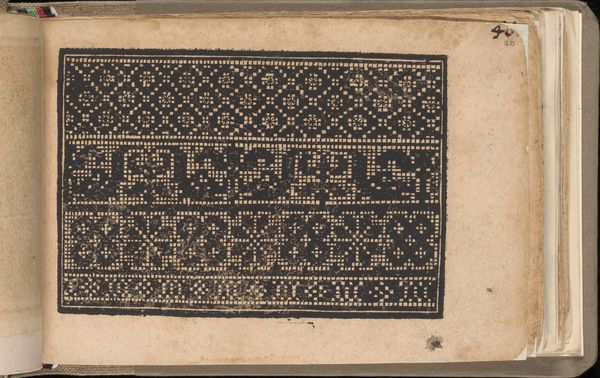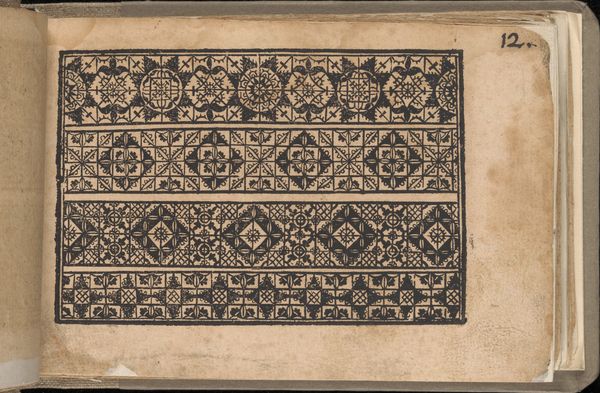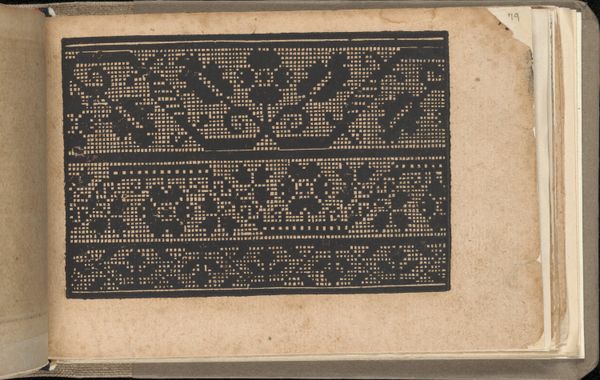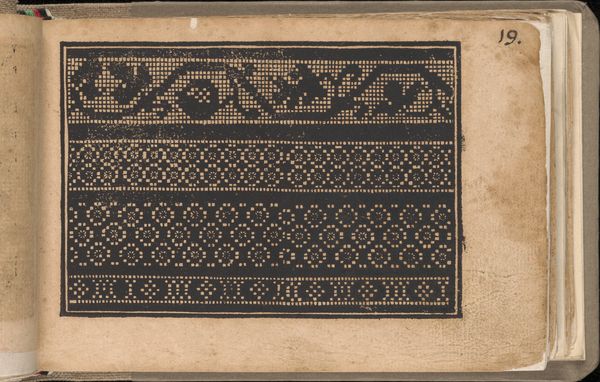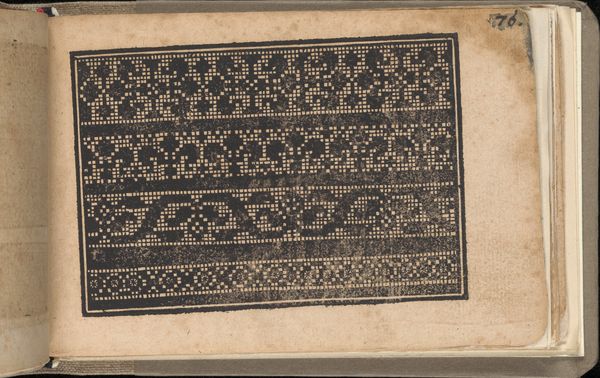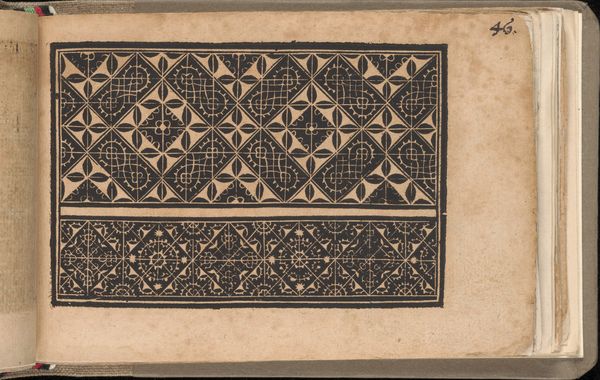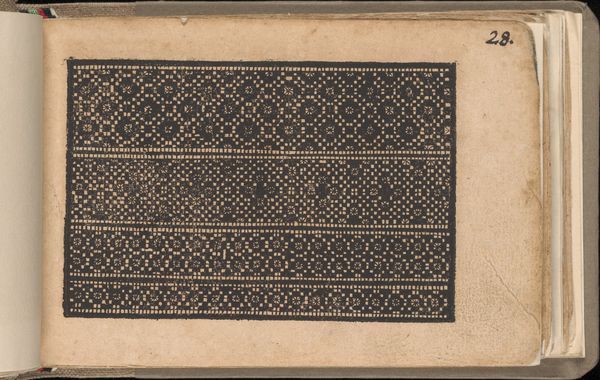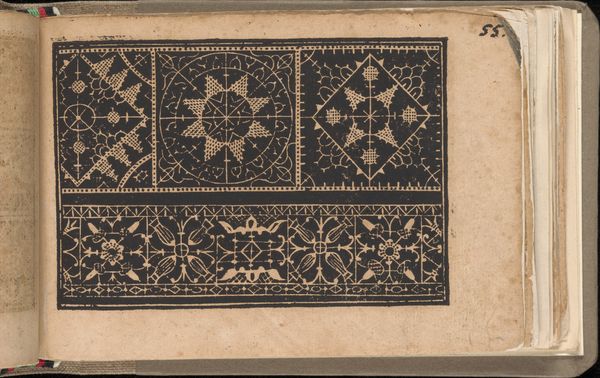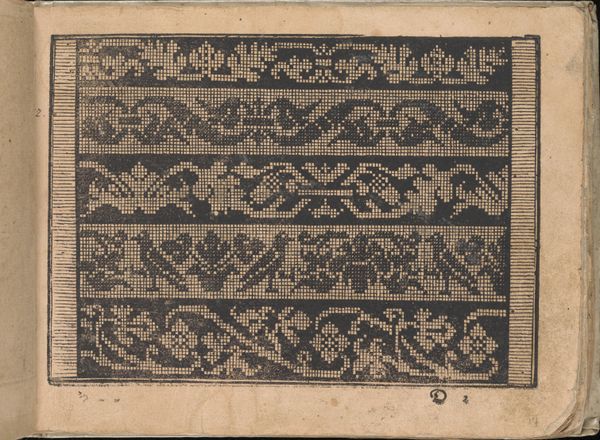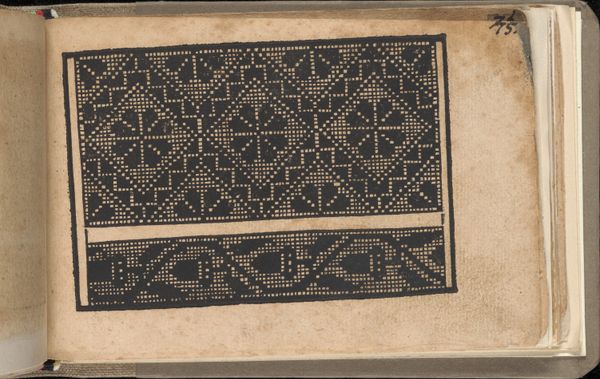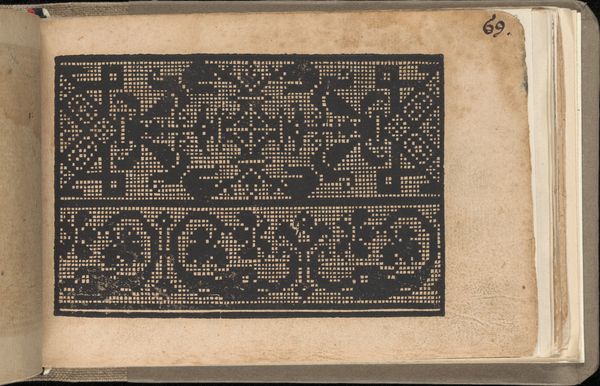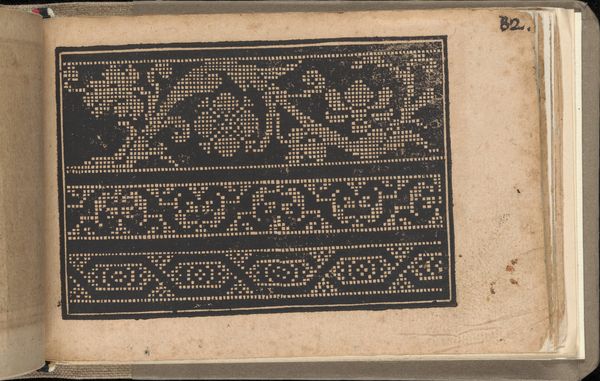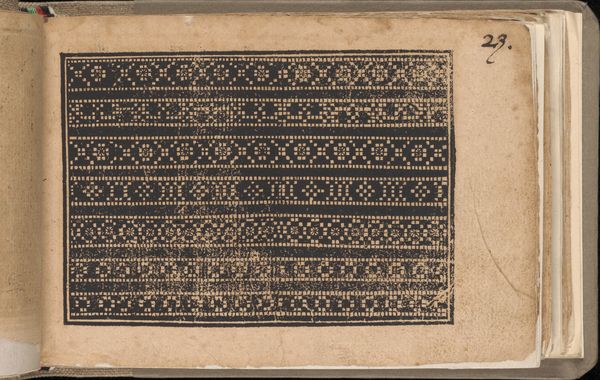
drawing, graphic-art, ornament, print, woodcut
#
drawing
#
graphic-art
#
ornament
#
ink paper printed
# print
#
book
#
woodcut
#
northern-renaissance
Dimensions: Overall: 4 1/2 x 6 11/16 in. (11.5 x 17 cm)
Copyright: Public Domain
Curator: This is page 36r from "Schön newes Modelbuch," dating to 1608. This woodcut print, currently held at the Metropolitan Museum of Art, is attributed to Sigismundus Latomus and provides an example of Northern Renaissance graphic art. Editor: My initial thought is "deliberate." There’s such a rigid structure. The way these repeating geometric forms are rendered in such high contrast—it feels very precise, almost austere. Curator: Indeed. These model books were hugely important in disseminating patterns across Europe. "Schön newes Modelbuch" served as an instruction manual, dictating not just aesthetics but also the standardization of craft. These patterns would then circulate through various levels of society. Editor: It's fascinating to consider this as a template for artisans. Woodcut is an interesting choice. It's relatively reproducible, allowing this precise design to permeate many different workshops and households. One must also remember the work and expertise that has gone into its production. Curator: Exactly. Before industrialization, such ornament books facilitated a kind of pre-industrial standardization. Wealthy merchants, skilled laborers—all would have consulted it to varying degrees. Editor: The impact of a page like this extends so far beyond aesthetics. You think of the lacemakers, embroiderers, maybe even tapestry makers interpreting and re-interpreting the image. Were the final products true to the woodcut, or could one see variation due to material conditions, skills, available technologies, and social customs? Curator: Most definitely, each iteration carried subtle negotiations of artistic integrity and practicality, highlighting that design isn't made in a vacuum. The socio-political implications, the economy of artistry, were definitely entwined. Editor: These repetitive, precise movements are fascinating too, imagining those laboring away in Northern Europe and beyond translating ink on paper to cloth and thread, adding unique touches—all made possible by these readily accessible prints. Curator: Considering "Schön newes Modelbuch" and its place within a long tradition of similar books reveals how aesthetic inclinations were both spread and received in 17th-century Northern Europe, allowing craft knowledge to proliferate through artistic agency. Editor: Yes, what begins here transcends the book, finding life and labor elsewhere through acts of interpretation and materiality.
Comments
No comments
Be the first to comment and join the conversation on the ultimate creative platform.
